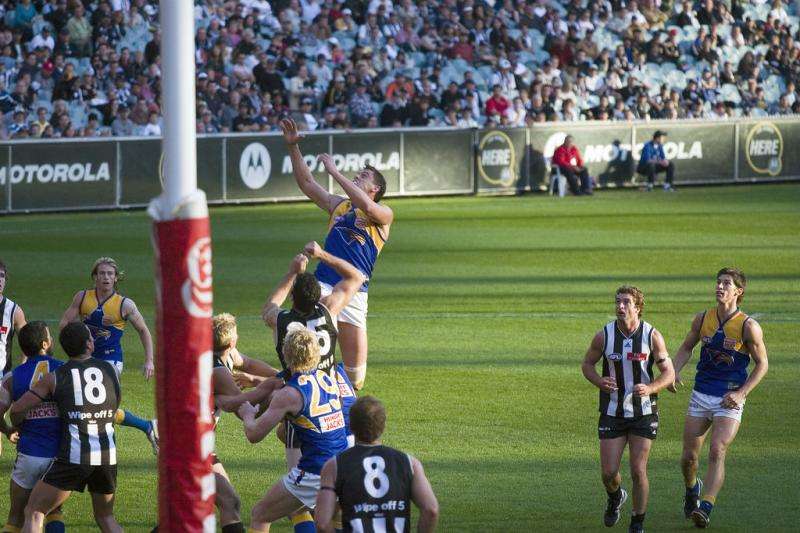A numbers game—calculating on-field tactics

Dockers and Eagles fans could improve their team's on-field chances by yelling out to the players to pass the ball, according to a new complex mathematical network theory.
University of Western Australia statistics whizz Calum Braham has developed and applied his theory against AFL ball passing statistics supplied by Champion Data, for the 2014 Premiership Season.
The theory means he can show that teams which distributed the ball more evenly between players were the most likely to win.
But it could also enable teams to acquire supplementary statistical information by applying the method to their own team's network.
"One example is the closeness centrality measuring how well a player is connected to other players in their network," Mr Braham says.
"As would be expected, Matt Priddis has the highest value for the Eagles and Nat Fyfe for Fremantle," he says.
"Players with high scores for the betweenness centrality… were Jack Darling and Shannon Hurn for the Eagles and Lee Spurr and Nat Fyfe for the Dockers."
Betweenness centrality is the measure of the extent to which a certain player connects to other player's on their team and contributes to the transport of the ball towards the goals.
Teams could use this information to supplement existing performance statistics, Mr Braham says.
"This is because I have shown using the theory how complex network methods can provide useful statistical information about football, which goes beyond the data clubs obtain through other methods," he says.
UWA applied mathematics professor Michael Small, who guided Mr Braham's research, says the basic principal of the theory could be applied to other ball sports.
"One of the unique advantages in applying the theory to Australian Rules football is that it's a very loose and fluid game, with players not held in a stringent position," Prof Small says.
"Other sports were people are required to stay close to a pre-determined position the results of the analysis may be very different, but there is no reason it wouldn't work for them as well," he says.
The research's aim was to develop tools of complex network theory and show how they can be applied to social dynamics in team sports and other transport problems including industrial logistical inefficiencies.
"For example the state's many mineral processing industries would benefit from this type of development because the process from mine site to refinement and shipping involves many interconnected and interdependent steps that can be modelled with these techniques." Prof Small says.
Provided by Science Network WA
This article first appeared on ScienceNetwork Western Australia a science news website based at Scitech.




















